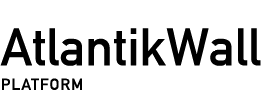News
Tuesday 22 February 2011 – The site revamped!
Return visitors to the site may already have noticed: The main page has become much more animated. First we added the flashing orange call to action: “Join us!/Doe mee!” below the header to accent the site’s characteristic of growth and collaborative effort. Next came the winking eye in the upper right, which when clicked, conjures up a screen full of thumbnail pictures and maps. These images can be enlarged and they link directly to points of interest and their location on the detail maps of that particular section of Atlantic Wall.
An alternative way to explore the site is guided by images: follow your impulse and allow yourself to be surprised. The images change when you hit the refresh button. In other words, practice ‘at random visual navigation’. We, the architects of the site, would love to hear from you. Please communicate with us using the contact button!
A new feature is the slide show on the opening page above the main map. A pictorial introduction, it shows some of the site’s most telling photos: The war years 1940-’45, post-war reconstruction, the current situation and the wall’s physical remains. The slide show is stopped and started by clicking the “skip intro” and “run intro” buttons on the upper left.
What else is new?
• First of all, the orange Dutch [NL] section on the European map. This color indicates that, so far, only information about the Dutch coastal section of the Atlantic Wall has been uploaded to the site. Other countries and sections will follow in due course. Another indication that this a growing site.
• The green line indicating defensive fortifications along the British coast has been removed in response to input from users including: Prof. Koos Bosma (VU-CLUE). Only the line along the Nazi-occupied Channel Islands is still showing.
• The green Atlantic Wall line along Europe’s shores from the North Cape to the Bay of Biscay is now brighter and bolder. Visitors to the site had commented that the previous green line on the main page inconspicuous and did not focus attention on the subject. We hope this has been remedied.
Sunday 6 February 2011 – Wadden Geschut
On December 20, 2010, the Frisian radio service and its Projectbureau Waddeneilanden hosted a mini conference on the Wadden during WOII. One of the ideas presented for further study was to compile a historically accurate inventory of remains of the Atlantic Wall and other defense works, to catalog the stories behind the structures and to use this information to set up thematic public trails along national heritage sites.
Atlantikwallplatform was represented by associates Arjan Nienhuis and Paul Dijkstra. They demonstrated the website and suggested ways to use the site as a podium for ongoing projects, new insights and as a forum for research. The Leeuwarder Courant newspaper reported on the conference (click to magnify [text in Dutch only]):
One of the participant also blogged about the event [text in Dutch only]:http://neffensmy.blogspot.com/2010/12/wadden-geschut.html
7 December 2010 – The first contact form has been received!
While the site was still under construction and with limited functionality, and within minutes of revising the Contact button text, we received our first feedback! Peter de Krom sent us his comments on 7 December 2010. An attendee of the September 2010 Atlantikwall conference in Amersfoort, Peter was already familiar with the beta version of the site. “Just went and had another look and noticed that updates are appearing fast and furious. Wonderful! However, I spotted a number of inaccuracies in the overview maps of Hook of Holland. I’m a resident of Hook myself and have been interested in the history of defense works since my teens. If you could use my services in any way, I would be most willing to help, be it with editing, correcting, information, documentation or images. This way I hope to be able to contribute to recording this bit of Dutch history as accurately as possible.”
Thank you, Peter, for this generous offer! This is a reassuring sign for wall site authors and partners. We want to see the website expand in terms of countries and content and we hope that over time, international Atlantic Wall specialists will help us achieve this goal. That they will contribute their insights and knowledge of the wall and its hardware, the surrounding landscape and its social ramifications – evacuation, demolition, reconstruction – on the fabric of life, both then and now.
